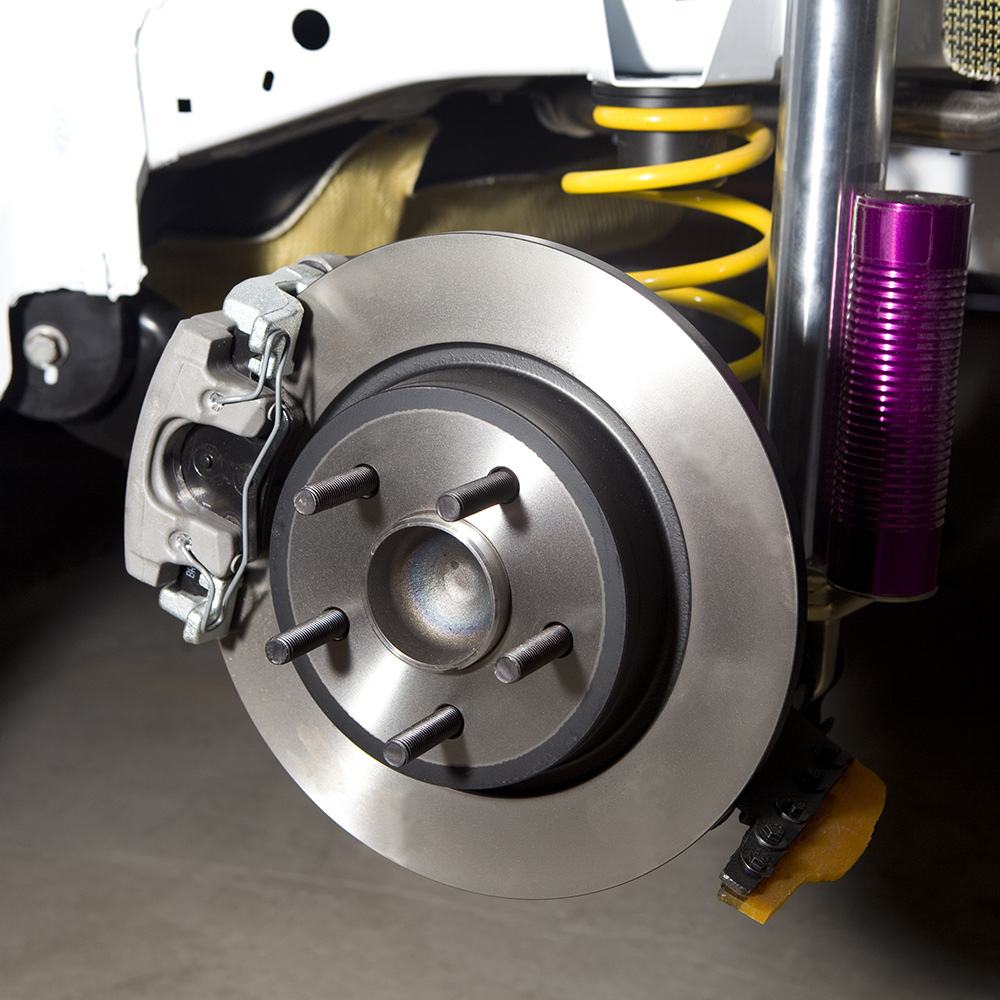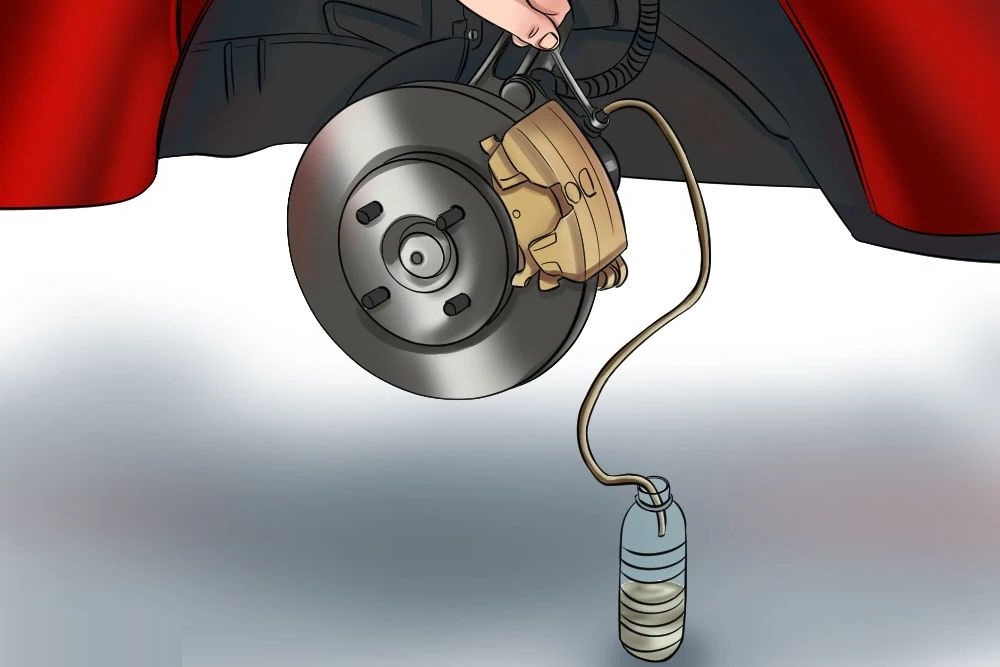Can You Bleed Brakes While Car is Running
No, you cannot bleed brakes while the car is running. Bleeding brakes requires the car to be turned off and the brake pedal to be pressed repeatedly.
Bleeding brakes is an essential maintenance task that ensures proper brake function and improves overall safety. By removing air bubbles from the brake lines, this process enhances brake responsiveness and allows for smooth and efficient braking. Whether you are experiencing spongy brakes or are replacing brake components, bleeding brakes should be done carefully and correctly.
It is important to follow the manufacturer’s instructions and use the proper tools to complete this task. Neglecting to bleed brakes properly can lead to reduced braking performance and potential safety hazards on the road.

Credit: www.homedepot.com
Why You Should Avoid Bleeding Brakes With A Running Car
It is strongly advised to avoid bleeding brakes while the car is running due to several risks and potential damage to the braking system. One major concern is the possibility of introducing air into the system, which can impair brake fluid circulation and compromise braking performance. This can result in a spongy brake pedal and decreased stopping power, posing a serious safety hazard.
Moreover, bleeding brakes with a running car can lead to excessive brake fluid pressure, which may damage brake lines and components. The increased pressure from the running engine can cause brake fluid to leak from the system, leading to the need for costly repairs.
To ensure safety and prevent damage, it is best practice to follow proper brake bleeding procedures recommended by car manufacturers. This typically involves turning off the engine, opening the brake bleeder valves, and allowing gravity or vacuum pressure to remove air from the system.
Alternative Methods For Bleeding Brakes
When bleeding brakes, there are alternative methods that can be used apart from the traditional approach. These alternative methods include the vacuum bleeding technique and the pressure bleeding approach.
The traditional brake bleeding method involves having a second person manually pump the brake pedal while the bleed screws are opened and closed. This process is repeated until all air bubbles are removed from the brake system.
Another alternative method is the vacuum bleeding technique. This method utilizes a handheld vacuum pump to create negative pressure and remove air from the brake lines. By attaching the vacuum pump to the bleed screw, air bubbles are drawn out, ensuring a properly functioning brake system.
The pressure bleeding approach is yet another alternative method. In this method, a pressure bleeder is used to pressurize the brake fluid reservoir, forcing brake fluid through the system and expelling any trapped air.
Overall, these alternative methods provide efficient ways to bleed brakes and ensure optimal brake performance without the need for a running car.
Steps For Safe Brake Bleeding
Can You Bleed Brakes While Car is Running
Steps for Safe Brake Bleeding:
Precautions to take before starting the process:
- Ensure that the car is parked on a level surface and the engine is turned off.
- Wear protective gloves and safety glasses to prevent exposure to brake fluid.
- Keep a fire extinguisher nearby as a precautionary measure.
| Tools | Equipment |
|---|---|
| Box-end wrench or ratchet | Brake bleeding kit |
| Drain pan | Clear plastic tubing |
| Jack and jack stands | Brake fluid |
- Locate the brake bleeding valve on each brake caliper or wheel cylinder.
- Attach the clear plastic tubing to the brake bleeding valve and place the other end in a drain pan.
- Open the valve and have a helper press the brake pedal slowly and hold it down.
- Tighten the valve and then release the brake pedal.
- Repeat the process until there are no air bubbles visible in the brake fluid.
- Check the brake fluid level regularly and top it up if necessary.
Signs That Indicate Your Car Needs Brake Bleeding
|
Brake bleeding is an essential maintenance task that ensures the proper functioning of your car’s brakes. If your car’s brakes are showing signs of needing brake bleeding, it’s important to address the issue promptly. One of the signs indicating that your car needs brake bleeding is a spongy brake pedal. It means that the pedal feels soft and gradually sinks to the floor when pressure is applied to it. Another indication is uneven braking, where you may notice that your car pulls to one side when you apply the brakes. Brake fluid contamination is yet another sign that your brakes need to be bled. Contaminated brake fluid may appear murky or contain air bubbles, compromising the efficiency of your brakes. If you experience any of these signs, it’s essential to have your brakes bled by a professional mechanic to maintain your safety on the road. |
Frequently Asked Questions Of Can You Bleed Brakes While Car Is Running
Can You Bleed Brakes While The Car Is Running?
No, you should never bleed brakes while the car is running. It is essential to turn the car off to prevent any accidents or injuries during the brake bleeding process. Bleeding brakes with the engine running can put you at risk of getting burned by hot brake fluid or getting injured by moving parts of the vehicle.
Always ensure the car is stationary and turned off before bleeding the brakes.
Why Is It Necessary To Bleed Brakes?
Bleeding the brakes is necessary to remove air bubbles that can get trapped in the brake lines. Air in the brake lines can reduce the efficiency and effectiveness of the brakes, leading to decreased stopping power and potentially unsafe driving conditions.
By bleeding the brakes, you ensure that the system is free of air, allowing for optimal brake performance.
How Often Should Brakes Be Bled?
The frequency of bleeding brakes can vary depending on several factors, including driving conditions and vehicle usage. As a general guideline, it is recommended to bleed the brakes every 2-3 years or whenever you experience spongy or unresponsive brake pedal feel.
Regular brake maintenance, including bleeding, helps to maintain optimal brake performance and ensure your safety on the road.
Conclusion
Overall, bleeding brakes while your car is running can be a risky practice. It’s essential to prioritize safety and follow the manufacturer’s guidelines for your specific vehicle. Running the engine can create unnecessary risks, such as damaging the ABS module, contaminating the brake fluid, or introducing air bubbles into the system.
To ensure optimal brake performance and maintain the safety of your vehicle, it is recommended to consult with a professional mechanic or refer to your car’s manual for the proper procedure.
